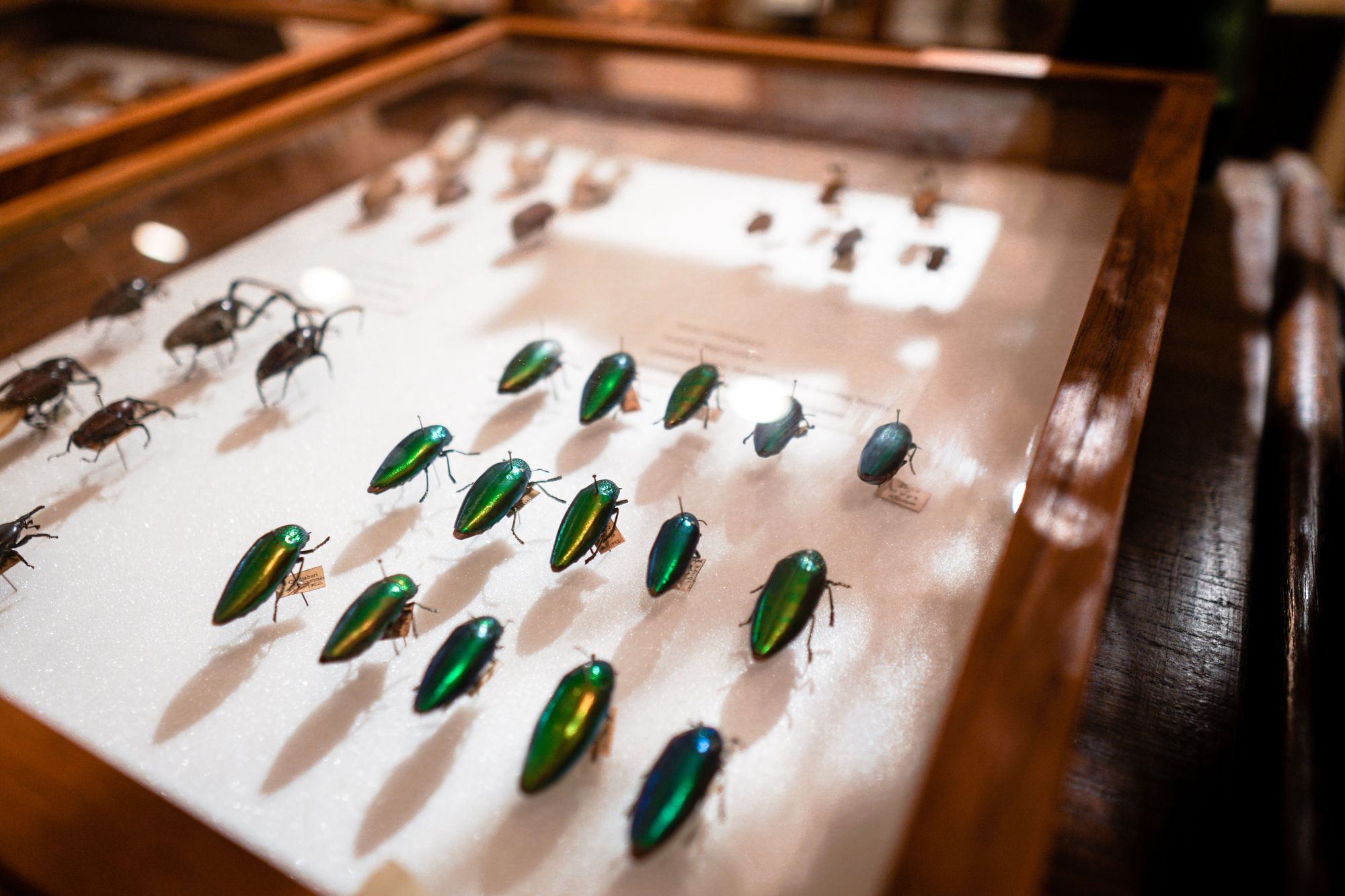technology
Technology and the Golden Age of Taxonomy
After decades of experience, the sharpest naturalists in history may have been able to identify a few hundred species in the field.

Alone in the forest, the modern person might find it difficult to identify a beech tree. Compared to indigenous shamans who forage thousands of medicinal plants, we are deeply disconnected from nature. But even if our personal understanding of nature is in decline, as a species, we’ve never known more about the natural world.
However, while it is valuable, indigenous knowledge is often limited to the local area, difficult to distinguish from myth and ritual, and, if passed on orally, easy to lose. Literate naturalists faced similar problems. Aristotle recorded many species in writing, but much of his work was lost. Most traditional written research that survived to modern times is narrow in scope, disorganized, and spread throughout obscure tomes.
Over the last few centuries, humanity has transformed this scattered folk knowledge into a systematic account of life on Earth. And over the last few decades, we’ve made that knowledge accessible to everyone. After decades of experience, the sharpest naturalists in history may have been able to identify a few hundred species in the field. Today, a 10-year-old with a smartphone app can identify millions with better accuracy.
The process began with Carl Linnaeus (1707–1778), a Swedish botanist whose magnum opus, Systema Naturae, forms the foundation of modern taxonomy. Linnaeus used a rank-based system to order life based on its physical structure. His system of kingdoms, classes, orders, families, genera, and species is still used today, though it has been significantly revised and expanded. By 1758, Linnaeus had cataloged and categorized around 10,000 species. As of 2020, that list had grown to over two million.
Our knowledge of life has grown deeper as well as broader. With little understanding of evolution or microbiology, Linnaeus only identified two kingdoms of life: plants and animals. Now, we know of seven (Plantae, Protozoa, Animalia, Chromista, Fungi, Bacteria, and Archaea), plus the strange world of non-cellular life (viruses and prions).
This knowledge is also becoming more reliable. In the past, since information about biodiversity was dispersed among many organizations and professions, organisms were often recorded multiple times under different names. In 2011, University of Hawaii biologist Camilo Mora estimated that 17.9 percent of species names were synonyms for the same species.
That is beginning to change thanks to the internet, which gave rise to global databases that attempt to centralize and standardize information about biodiversity. These archives compile taxonomic synonyms under a single entry and link them with the common names of species (i.e., Ictalurus furcatus with blue catfish), meaning they are useful for both scientists and laypeople.
Some of these databases are specialized–MycoBank deals with Fungi, FishBase with fish, and so on. Others are more general. The Catalogue of Life, for example, uses data from specialized databases to create a universal record. Since 2000, the Catalogue of Life has grown from 220,000 species to over two million. Using their website, you can access information about nearly any discovered life form with a single search.
Other projects have even loftier goals. The International Barcode of Life (iBOL) is creating a library of “DNA barcodes,” or short sections of DNA that are unique to each species. Using DNA records eliminates the risk of taxonomic synonyms and provides a fool-proof way to identify specimens found in the wild. iBOL has already scanned 500,000 species and plans to scan another two million by 2026.
By organizing our knowledge about life, these databases promise to bring taxonomy into a golden age of reliability and accessibility. Information that once existed only in the heads of experts and rotting scrolls is now in reach of anyone with a computer.

These advances couldn’t have come at a better time. Though we don’t know the state of microbial life, plant and animal biodiversity is in decline, meaning we need to act quickly. If a species goes extinct before we identify and sample it, whatever secrets its genetics contained may be lost forever. But if a species goes extinct after it has been sampled, it could be possible to bring it back from the dead.
The number of species that die out before we discover them depends on three factors: the discovery rate, the extinction rate, and the total number of species in existence. University of Auckland biologist Mark Costello has calculated that the rate of species discovery far outpaces the extinction rate. So, at a minimum, we should expect to identify most species on Earth before they go extinct. How many we end up recording depends on how many species exist, a question that has eluded scientists so far.
To ensure we discover as much life as possible, we should decrease the extinction rate and increase the discovery rate. And of course, it is not enough to have many types of life; we should also ensure each species can thrive in great numbers. The good news is that globally, deforestation is slowing, and the wilderness is returning. Those trends, combined with successful conservation efforts, have caused many previously endangered species to rebound.
This renewal isn’t limited to protected areas. Recent research in Spain has shown that after humans retreated from nature and let their farms grow into forests, animals became bolder and expanded their habitats into unprotected land. Rather than hiding in remote cliffs, golden eagles began nesting in lower-altitude trees. Wolves, bears, and boars expanded in numbers and are now encroaching on human settlements. The European otter, once considered an “upper-river specialist,” moved downstream and even colonized coastal areas and golf courses.
In other words, we are discovering that nature is resilient. When we remove our yoke from the natural world, wildlife recovers.
Things are looking good on the discovery front as well. The ecologist Lucas Joppa found that since 1800, the number of species discovered per year in all groups except for birds is increasing exponentially alongside the number of taxonomists. However, the number of species the average taxonomist describes is decreasing, meaning we may need ever more taxonomists to keep up the pace of discovery.
Luckily, technology is giving everyone the ability to contribute to taxonomy. iNaturalist, a social network developed at UC Berkeley, allows users to upload photographs of organisms to be identified by the entire naturalist community or by a machine learning algorithm trained on previous observations.
To date, the app has generated 78 million observations, many of which contribute to user-generated projects that tackle everything from tracking invasive species to photographing previously undocumented living specimens. The app isn’t just a fad, either. Since 2012, the number of iNaturalist users and observations has doubled every year.
Whether they are identifying the weeds in their gardens, tracking invasive beetles, or counting seals in Antarctica, citizen scientists promise to bring our knowledge of the natural world to ever greater heights.
Post-industrial humans may be separating from nature. We spend very little time in it and, compared to our nomadic ancestors, we scarcely rely on it. But by removing ourselves from the natural world, we are giving other creatures the chance to thrive, and whatever connection we have lost is being replaced with knowledge that is just as spectacular.






